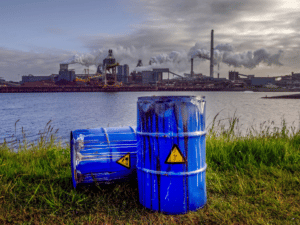Seamen and offshore workers who are covered by the Jones Act protection routinely perform potentially hazardous tasks. Whether they are working in ships or offshore facilities, they are constantly exposed to materials or working conditions that put them at risk of being injured or contracting job-related illnesses. When seamen are exposed to asbestos and become injured or seriously ill as a result of negligence or unseaworthiness, the Jones Act allows them to file lawsuits against the employers who were responsible for the exposure.

Deadly Exposure: Asbestos in Maritime Workplaces
Asbestos refers to a group of six fibrous minerals with certain desirable traits that made them widely used in the maritime industry. These minerals have insulating abilities and can withstand high temperatures, fire, and chemical reactions. Many shipbuilders added asbestos-containing materials (ACMs) in almost every component of a ship to prevent or minimize damage from a fire or extremely high temperatures. This was standard procedure for much of the 20th Century.
The most common types of asbestos found in ships are unfortunately the most dangerous types as well; blue and brown asbestos. Not only are blue and brown asbestos the most toxic varieties, but they were also applied to pipes and other components with the least safe method: spraying. Spraying is considered the most unsafe way to apply asbestos as it makes it more friable and therefore significantly increases exposure levels.
In addition, a vessel on open waters is constantly in motion. It not only plows ahead through constantly changing sea conditions but it is often buffeted up, down, and sideways by winds and waves as it travels to its destination. All these movements can stir asbestos fibers into the enclosed spaces of an older vessel that was built with ACMs. Consequently, ship crews on older, ACMs-containing vessels are constantly at risk of inhaling or swallowing asbestos fibers.
Most ships built before the 1980s contain exorbitant amounts of ACMs. American shipbuilders started using asbestos substitutes in the early 1980s after the Environmental Protection Agency (EPA) reported a connection between asbestos exposure and medical conditions such as asbestosis and mesothelioma.
Offshore Workers and Asbestos Exposure
Offshore workers also suffered exposure to asbestos in oil rigs and other facilities built and operated between the 1960s and 1980s. Many of these facilities, particularly oil rigs, used an asbestos-containing drilling mud additive to increase viscosity in wells. Introduced in the 1960s, asbestos mud usually combines the toxic mineral with a material called bentonite. Many oil companies used asbestos mud in the exploration and exploitation of petroleum deposits in the Gulf of Mexico and elsewhere until asbestos use declined in the 1980s.
The Jones Act: Asbestos Connection
After many years of mounting medical evidence that prolonged exposure to asbestos causes mesothelioma and other serious illnesses, U.S. shipbuilding and offshore companies stopped using ACMs and asbestos mud in their ships and operations. However, malignant mesothelioma is usually diagnosed many years and even decades after the exposure occurred. As a result, many seriously-ill maritime workers who were employed on vessels or offshore facilities and were exposed to asbestos products decades ago have been pursuing legal action against their employers for negligence.
Many of the large companies which manufactured asbestos products, including Johns Manville, have declared bankruptcy, so most of the asbestos-related litigations involving maritime companies now focus on the plaintiffs’ employers. Even in cases when a maritime or oil company changes its name or ownership, the Jones Act still permits seamen to sue their erstwhile employers if negligence caused or contributed to illnesses or injuries that resulted from asbestos exposure.